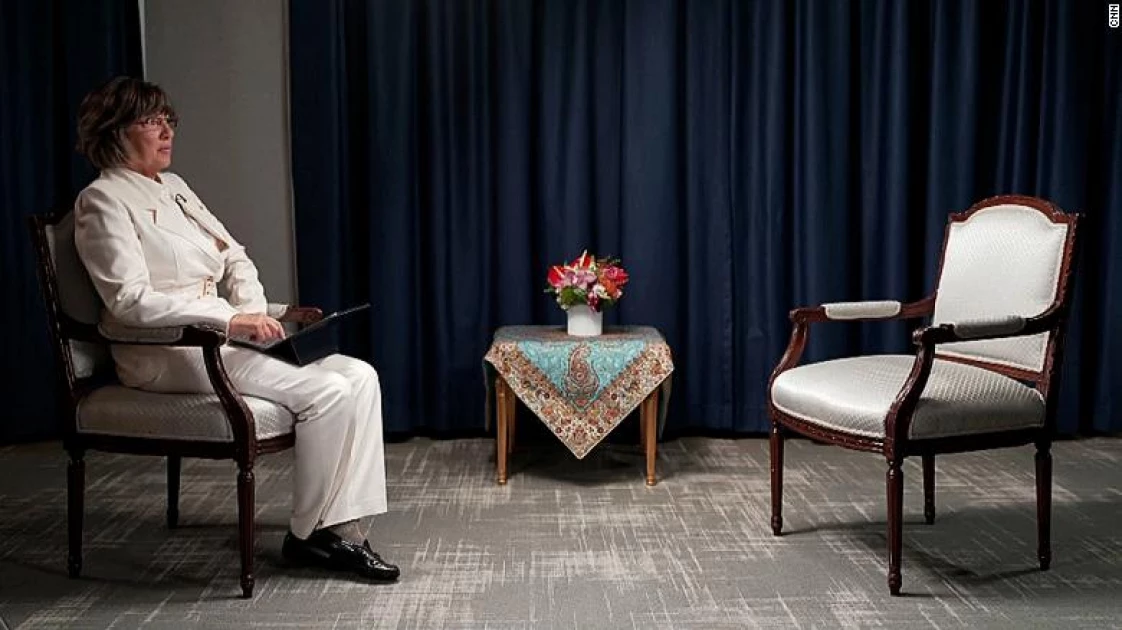
Ebrahim Raisi, the president of Iran, canceled his interview with CNN Journalist Christiane Amanpour as she insisted on not wearing a headscarf (hijab). The interview was supposed to happen at the UN General Assembly in New York City.
Interestingly, the Iranian president’s decision to postpone the interview even on American soil due to the hijab comes at a time when Iran is seeing unheard-of rallies against the country’s mandatory hijab laws. Protests against the Islamic regime in power in Iran have erupted across the nation in the wake of the murder of Mahsa Amini for wearing an “inappropriate hijab.”
Amanpour revealed the information by saying that the interview was scheduled after weeks of preparation and hours of putting up equipment. President Raisi, however, did not show up at the appointed time. Forty minutes later, one of his assistants approached Amanpour and explained the situation. Given that it is the holy month of Muharram and Safar, she was instructed to don a headscarf.
After Christiane Amanpour politely declined the request, she was informed that the interview would not be possible until she wore a headscarf. In the end, the interview was canceled because Amanpour insisted on not wearing a headscarf.
Protests in Iran over mandatory hijab

Last week, anti-government demonstrations broke out throughout Iran in response to the death in detention of Mahsa Amini, 22, who had been detained by Iran’s morality police after being accused of breaking the law about head coverings.
Thousands of people have taken to the streets, including some women who have cut their hair and burned their hijabs in protest against the law. According to witnesses and footage posted on social media, at least eight people have reportedly died in the protests, which have been greeted with a harsh crackdown by the government.
The protests appear to be the largest manifestations of disobedience to the Islamic Republic’s authority, which has gotten stricter since Raisi’s hard-line cabinet was elected last year. Iran elected Raisi, an ultra-conservative leader whose views are in sync with those of the nation’s strong clergy and Supreme Leader Ayatollah Ali Khamenei, after eight years of Hassan Rouhani’s moderate administration.
The head scarf is a strong symbol of the personal restrictions placed on Iranians by the country’s clerical leaders, who control what they are allowed to wear, watch, and engage in.
The death of Mahsa Amini
/https://www.thestar.com/content/dam/thestar/uploads/2022/09/22/1243409558-0.jpg)
The death of Amini has sparked a long-simmering outburst of rage against limitations on individual freedoms. A growing number of Iranians do not feel the hijab, or head scarf should be required, according to surveys and reports from recent years.
Iranian officials have claimed Amini died after suffering a “heart attack” and falling into a coma, but her family has claimed she had no pre-existing cardiac disease, according to Emtedad news, an Iranian pro-reform media outlet. The public anger has also been fueled by the skepticism of the authorities’ explanation for her death.
Mahsa Amini was shown on camera falling at a “re-education” facility where she had been sent by the morality police to receive “advice” on her attire, according to CCTV footage posted by Iran’s state television.
Amanpour had intended to question Raisi about the protests, the killing of Amini, the nuclear deal, and Iran’s backing for Russia in Ukraine, but she had to leave, according to Amanpour. She wrote on Twitter, “As protests continue in Iran and people are being killed, it would have been an important moment to speak with President Raisi,”.






